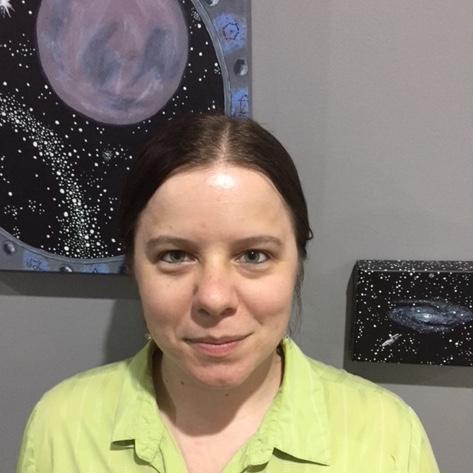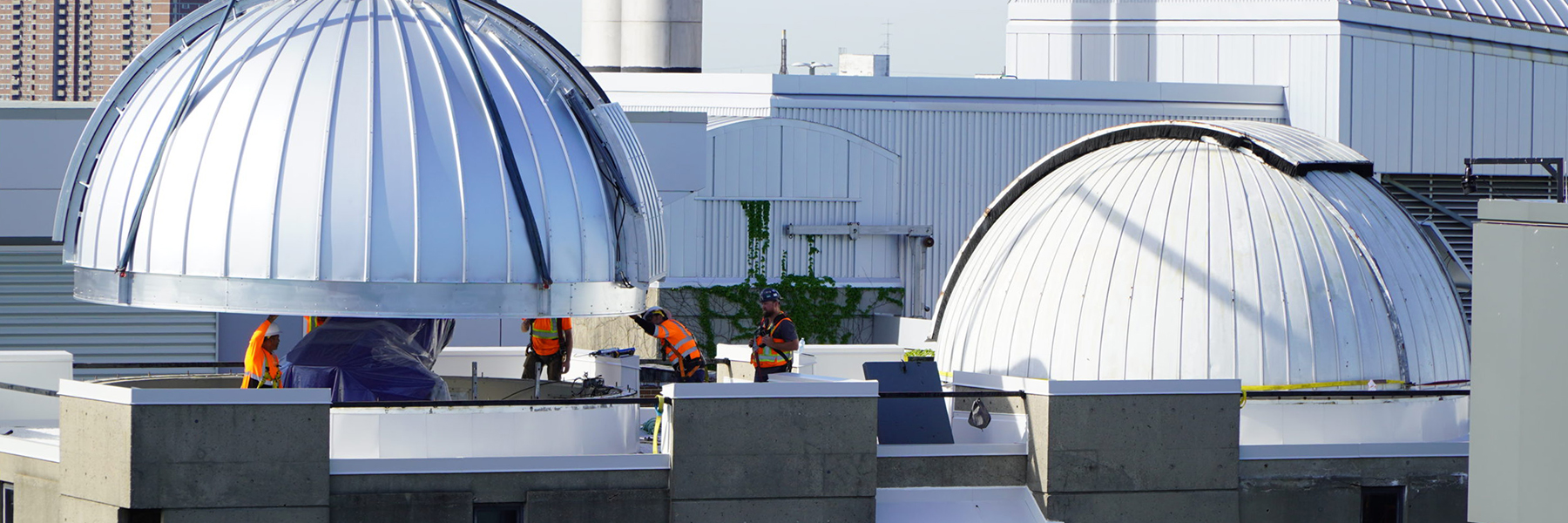On June 14, two new observatory domes were successfully lifted into place at York University’s Allan I. Carswell Astronomical Observatory, replacing the original 1960s ones, which were removed by a crane earlier in the day.
“It’s really exciting. These new domes will give us so much more functionality and ease of use, but even more importantly, we will have a larger opening that will allow observers to see more of the sky through the telescopes,” says Assistant Professor Elaina Hyde, director of York’s observatory in the Faculty of Science. “This will allow us to increase our research and public outreach”

It took a week of on-the-ground preparation to assemble the new 6.24-metre diameter domes on-site before they were ready to be craned into place beginning at 7 a.m., following the removal of the old ones.
One dome covers the one-metre telescope, the largest on a university campus, while the other covers the 60-cm telescope.
“This is going to be a massive improvement in many ways as they are a different design of dome, which will allow us to view the whole of the sky,” says Hyde.
With the old domes, the bottom shutter was always blocking a portion of the sky, but with the new ones the bottom shutter is hydraulically operated and flips out, making the opening larger for viewing with a 1.8-metre aperture width. Viewing objects such as supernovas, asteroid transits, exoplanets and more will now be possible.
They are also technologically superior to the original domes. The domes are automated so the top and bottom shutters are controlled through a computer and can even be operated remotely. They can be programmed to automatically rotate as the telescope moves to track any celestial object, which means multiple objects can be imaged in one night.
“It means we can collaborate with other astronomers and teachers anywhere in the world for research and outreach,” says Hyde. “In addition, as the interfaces for class observing will also be better, more classes and labs can be scheduled every night.”
Unlike the previous domes, these new ones will have little outside maintenance requirements and will never need painting. They are aluminum-zinc alloy-coated using a hot-dip process.
“The whole process went really smoothly and was amazing to watch. My colleagues and students are all super exited to start using them,” says Hyde.
Online public viewing and chat sessions will continue every Monday night between 9 and 10 p.m. via Zoom, along with the York Universe radio show on astronomy.fm at the same time. Live-streamed public viewing and Q-and-A sessions will happen every other Wednesday night at 7:30 p.m. on YouTube.


